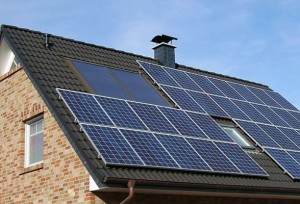Is Your Building Suitable For Solar Power?

 Solar panel systems are lighter than most people expect. Generally, they add less than 4 lb. per square foot of load to the roof. Most construction after 1970 is designed to support much greater loads than this and may not require structural upgrades. Buildings older than 1970 may need some structural work before the solar panels can be installed. Another important factor is the age and condition of your roof. A roof in poor condition is a cause for concern and repairs or replacement may be needed prior to installation.
Solar panel systems are lighter than most people expect. Generally, they add less than 4 lb. per square foot of load to the roof. Most construction after 1970 is designed to support much greater loads than this and may not require structural upgrades. Buildings older than 1970 may need some structural work before the solar panels can be installed. Another important factor is the age and condition of your roof. A roof in poor condition is a cause for concern and repairs or replacement may be needed prior to installation.
Where to put the solar panels is important for maximizing the exposure to sunlight throughout the day. The orientation for maximum efficiency is due south. Southeast and southwest are also efficient orientations if you are unable to put panels directly due south.
Shade is a limiting factor for many solar panel networks. Different types of panels react differently to shade. A poly-crystalline panel will have a reduced output in the shade but a mono-crystalline panel will stop production all together. If shade is unavoidable, it is best if there are limited shadows during the optimum production hours (10 a.m. to 3 p.m.) The location of your building, in terms of latitude, determines the ideal angle of tilt for the panels. In Maryland, at a latitude of around 40 degrees, the best tilt range is between 20 and 40 degrees.
The number of panels needed is based on several factors. First, the average amount of energy that you want to generate and your building consumes a day is needed. Your monthly electricity bill can be then be used to see how much power your solar network needs to produce to keep up with your energy demands. An average sized solar panel produces around 100 watts per day. The amount of panels needed is based on this number as well as how efficient the angle and location of the panels are.
